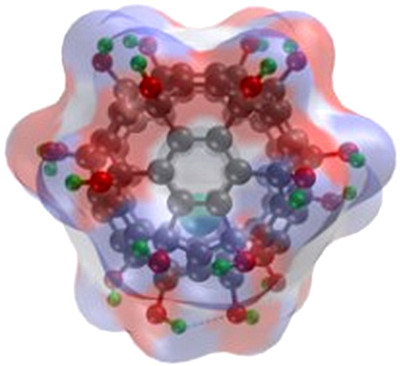The traditional strategies of cancer therapy usually focus on inhibiting bulk cancer cells. Recent oncobiology studies, however, reveal that only a small subpopulation of cancer cells, termed cancer stem cell (CSC), is the bane of cancer recurrence, metastasis, chemotherapeutic and radiotherapeutic resistance.
Guided by this new direction of tumor diagnosis and treatment, researchers are making more efforts for developing novel medicines and methods effectively targeting and killing cancer stem cells. Prof. ZHAO Yuliang and his team composed of researchers from the Key Laboratory for Biomedical Effects of Nanomaterials and Nanosafety, Institute of High Energy Physics (IHEP), the National Center for Nanoscience and Technology of China, and the University of Science and Technology of China have found that metallofullerenol nanomaterial Gd@C82(OH)22 possesses highly effective intrinsic inhibitory activity against triple-negative breast cancer stem cells. Gd@C82(OH)22 blocks epithelial-to-mesenchymal transition (EMT) with resultant efficient elimination of human breast CSCs resulting in abrogation of tumor initiation and metastasis. Moreover, facilitated with the conversion of deprotonation and protonation under hypoxic conditions found in the tumor microenvironment, Gd@C82(OH)22 can be engineered to directly target and "snipe" at CSCs with significant therapeutic potential.
More importantly, Gd@C82(OH)22 with definitive evidence exhibits essentially non-toxic to normal mammary epithelial cells. So far, the significant cytotoxicity of the existing CSC inhibitors should be a critical issue that limits their clinical use. Conversely, Gd@C82(OH)22 performs no significant cytotoxicity both in vitro and in vivo. Therefore, Gd@C82(OH)22 should be a potent candidate as non-toxic CSC targeting inhibitor.
Cancer stem cells themselves, like bulk tumor cells, are of high degree of heterogeneity. Traditional CSC inhibitors normally aims only at one single target of CSC, thus can only partially weaken but not effectively kill CSCs. In addition, toxicity towards normal stem cells would be significantly increased. Due to their unique physicochemical properties of fullerenol nanostructures, in particular of its highly adjustable surface structure, Gd@C82(OH)22 is versatile for cancer therapy. Therefore, Gd@C82(OH)22 is possible to achieve CSC multiple targets inhibitions, meanwhile no increasing toxicity on normal stem cells, which consequentially provide a useful new way for clinical treatment of CSCs.
Traditional chemotherapy and radiotherapy damage both tumor cells and normal cells. Consequently, the strong side effects of these methods finally cause failure of clinical cancer therapy. Since the researchers of IHEP discovered these low toxic but highly efficient tumor inhibiting carbon nanomaterials from 2005, they have developed a novel strategy that imprison tumor cells by these surfaces modified carbon nanomaterials (i.e. Gd@C82(OH)22). Besides, the design of tumor cells imprisonment by Gd@C82(OH)22 has been confirmed by animal experiments. Recent mechanism investigations further illustrate that this strategy significantly overcomes multidrug resistance of cancer treatment (PNAS 2010), and benefits the highly effective inhibition of tumor metastasis which is preeminent above the principle of traditional medicines and targets (PNAS 2012), as well as inhibiting CSC self-renewal and finally terminating tumorigenesis and metastasis. The work has been published on Nature Communications.

Atomic structure of Gd@C82(OH)22 with color on the molecular surface showing approximated electrostatic potential (Image by IHEP)






